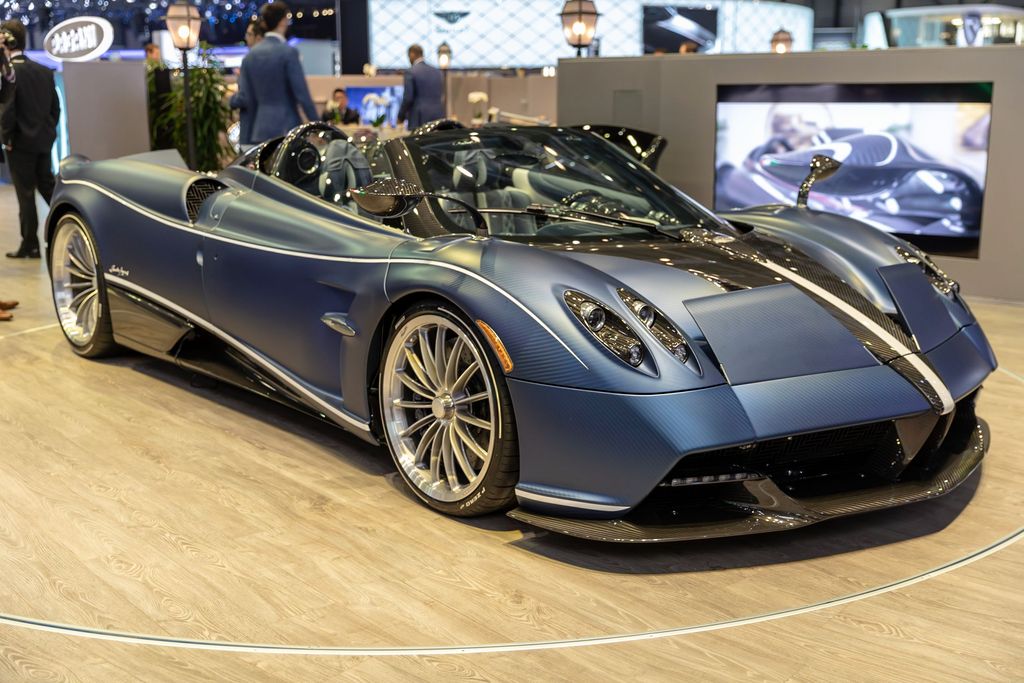
High-performance cars are designed to ignite the senses, promising an exhilarating blend of speed, power, and precision engineering. The automotive landscape is brimming with models that boast aggressive styling, compelling marketing, and a heritage of thrilling drives. Consumers, naturally, approach these vehicles with high expectations, anticipating that every rev of the engine and every press of the accelerator will deliver an unmatched experience.
However, the reality in the automotive world can sometimes fall short of the glossy advertisements and lofty promises. Not every car that looks fast truly is fast, and not every vehicle branded for performance genuinely lives up to that reputation. In an industry where innovation and engineering prowess are constantly highlighted, some models, regrettably, emerge with more show than go, leaving a trail of disappointed enthusiasts in their wake.
This in-depth analysis will meticulously examine 14 such vehicles that, despite their initial fanfare and design aspirations, ultimately failed to deliver on the fundamental promise of thrilling performance, especially when it comes to raw speed and acceleration. We delve into the specifics of what made these cars fall short, often leaving drivers with a sense of “more ego than horsepower.” Let’s begin our journey through the first half of this compelling list, uncovering the stark contrast between expectation and reality.
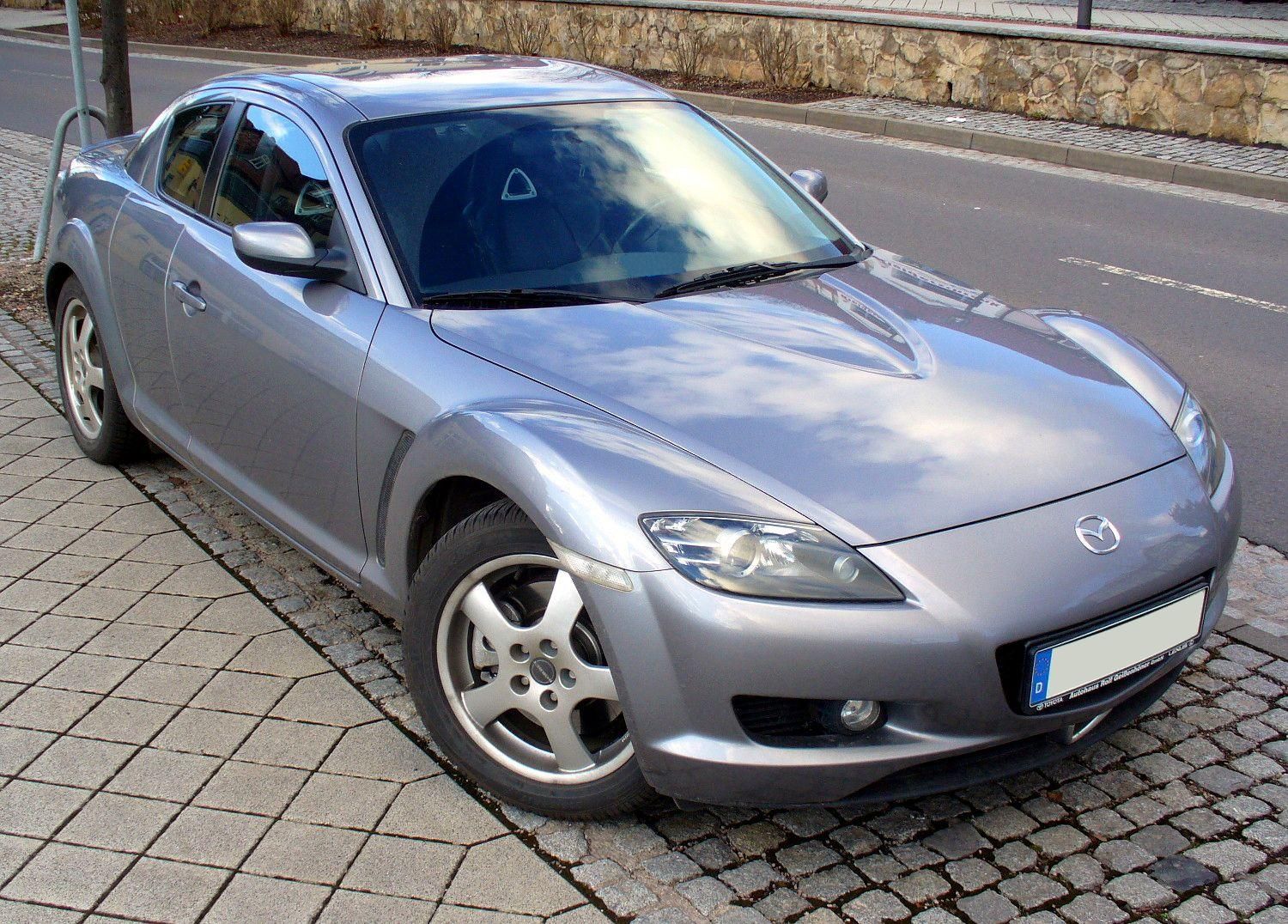
1. **Mazda RX-8**The Mazda RX-8, with its distinctive rotary engine and sleek, unconventional design, certainly presented itself as a car for the driving enthusiast. It boasted unique ‘freestyle’ doors and a chassis tuned for exceptional handling, leading many to believe it would be a true heir to Mazda’s sports car legacy. The car’s overall aesthetic and the promise of a high-revving rotary engine generated significant excitement, suggesting a vehicle that would blend exotic engineering with a spirited drive.
However, the rotary engine, while smooth and eager to rev, ultimately proved to be a critical point of contention regarding performance. Despite its unique character, the Mazda RX-8 was often criticized for its notable lack of torque, which translated into a less immediate and less forceful acceleration than expected from a sports car. Its horsepower, hovering around 232 hp, was modest when compared to rivals, leading to a noticeable disparity between its sporty looks and its actual straight-line performance.
This became particularly evident in its acceleration figures. The RX-8’s 0-60 mph time, typically around 6.5 seconds, while not outright slow, simply did not meet the heightened expectations for a car positioned as a pure performance vehicle. Enthusiasts looking for a raw, visceral punch often found the RX-8 to be sluggish, especially when put against other sports cars in its segment. It handled beautifully, no doubt, but the promised high-performance experience, particularly concerning outright speed, felt significantly diluted.
Car Model Information: 2005 Mazda RX-8 Sport Automatic
Name: Mazda RX-8
Manufacturer: Mazda
Production: February 2003 – June 2012
Assembly: Hiroshima
Class: Sports car
BodyStyle: Quad coupé
Related: Mazda MX-5 (NC)
Layout: Front-engine, rear-wheel-drive layout#Front mid-engine, rear-wheel-drive layout
ModelCode: List of Mazda model codes#Model codes
Designer: Ikuo Maeda,Wu-Huang Chin (interior designer)
Engine: Mazda Wankel engine#13B-MSP Renesis,Wankel engine
Powerout: convert
Transmission: Manual transmission,6-speed manual,Jatco JR405E transmission,6-speed automatic
Wheelbase: 2703 mm
Abbr: on
Length: 2003–2008: {{convert,4425,mm,in,1,abbr=on
Width: 1770 mm
Height: 1340 mm
Weight: Manual models: {{convert,1309,-,1373,kg,lb,0,abbr=on
Predecessor: Mazda RX-7
ModelYears: 2003–2012
Doors: Car door#Conventional
Categories: 2010s cars, All Wikipedia articles written in American English, All articles with failed verification, All articles with unsourced statements, Articles with failed verification from November 2019
Summary: The Mazda RX-8 is a sports car manufactured by Japanese automobile manufacturer Mazda between 2003 and 2012. It was first shown in 2001 at the North American International Auto Show. It is the direct successor to the RX-7. Like its predecessors in the RX range, it is powered by a rotary Wankel engine. The RX-8 was available for the 2003 model year in most parts of the world.
The Mazda RX-8 utilizes a rotary Wankel engine, and the non-reciprocating piston engine uses a triangular rotor inside a near oval housing, producing from 141 kW (189 hp) and 164 lb⋅ft (222 N⋅m) of torque, to 177 kW (237 hp) and 159 lb⋅ft (216 N⋅m) of torque from launch.
The RX-8 was discontinued for the 2012 model year without a successor. It was removed earlier from the European market in 2010 after the car failed to meet emissions standards. Due to falling sales from Europe coupled with rising yen prices, Mazda could not justify the continued sale of the RX-8 in other markets. 192,094 units were produced during its nine-year production run.
Get more information about: Mazda RX-8
Buying a high-performing used car >>>
Brand: Mazda Model: RX-8
Price: $10,950 Mileage: 33,775 mi.
Read more about: The Undeniable Rise: 12 Vintage Cars That Have Skyrocketed to 10x Their Original Value
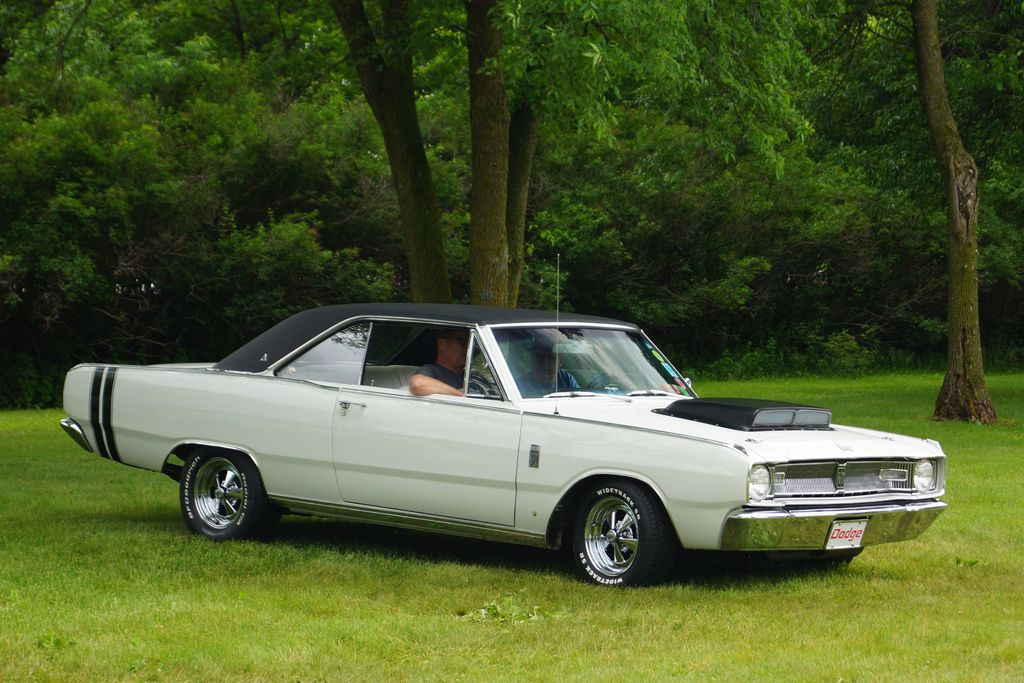
2. **Dodge Dart GT**The Dodge Dart GT arrived on the scene with an aggressive stance and a clear intent to embody sportiness within the compact sedan segment. Its marketing campaigns highlighted a vibrant, agile machine, suggesting a car that could blend practicality with exhilarating performance. The GT badge, historically associated with Grand Touring vehicles capable of sustained high speeds and dynamic handling, further amplified these performance expectations among potential buyers.
Beneath its sporty façade, however, the Dart GT struggled to deliver on the power front. Equipped with a 2.4-liter engine producing 184 hp, the vehicle simply lacked the kind of robust acceleration one would anticipate from a model carrying the GT designation. While it presented an appealing visual package, the engine’s output and the car’s overall responsiveness failed to match the energetic image Dodge sought to project, leaving many drivers feeling a disconnect between what was promised and what was experienced.
The disappointment became quantifiable when observing its acceleration times. With a 0-60 mph sprint taking over 8 seconds, the Dodge Dart GT proved to be quite sluggish, especially when benchmarked against other cars marketed as sporty and agile. This performance deficit was a significant letdown for consumers who were drawn in by its aggressive styling and the implied promise of a spirited driving experience. The Dart GT, in essence, was a case where image decidedly outpaced genuine horsepower.
Car Model Information: 1972 Dodge Dart Swinger
Name: Dodge Dart
Caption: 1966 Dodge Dart GT 2-door hardtop
Manufacturer: Dodge
Production: 1959–1976 (US market)
1969-1981 (Brazil)
AlternativeName: Charger (Brazil)
ModelYears: 1960–1976 (US market)
1970-1981 (Brazil)
Class: Full-size
Layout: FR layout
Predecessor: Dodge Coronet#Fourth generation (1957–1959)
Related: Plymouth Valiant,Chrysler Valiant,Dodge Phoenix
Successor: Dodge Aspen,Dodge Diplomat,Talbot Tagora
Categories: 1970s cars, All articles with unsourced statements, Articles with short description, Articles with unsourced statements from December 2023, Articles with unsourced statements from May 2025
Summary: The Dodge Dart is a line of passenger cars produced by Dodge from the 1959 to 1976 model years in North America, with production extended to later years in various other markets.
The production Dodge Dart was introduced as a lower-priced full-size model in 1960 and 1961, but became a mid-size car for one model year for 1962, and was then reduced to a compact for two generations, from 1963 to 1976.
Chrysler had first used ‘Dart’ name plates on two Italian styled show cars, in 1956 and 1957, before it became a Dodge model name. The Dart nameplate was resurrected for a Fiat-derived compact car that was introduced in 2012.
Get more information about: Dodge Dart
Buying a high-performing used car >>>
Brand: Dodge Model: Dart
Price: $18,900 Mileage: 40,424 mi.
Read more about: Unearthing the Automotive Unicorns: 9 Muscle Cars So Rare Even Dedicated Collectors Scramble to Find Them
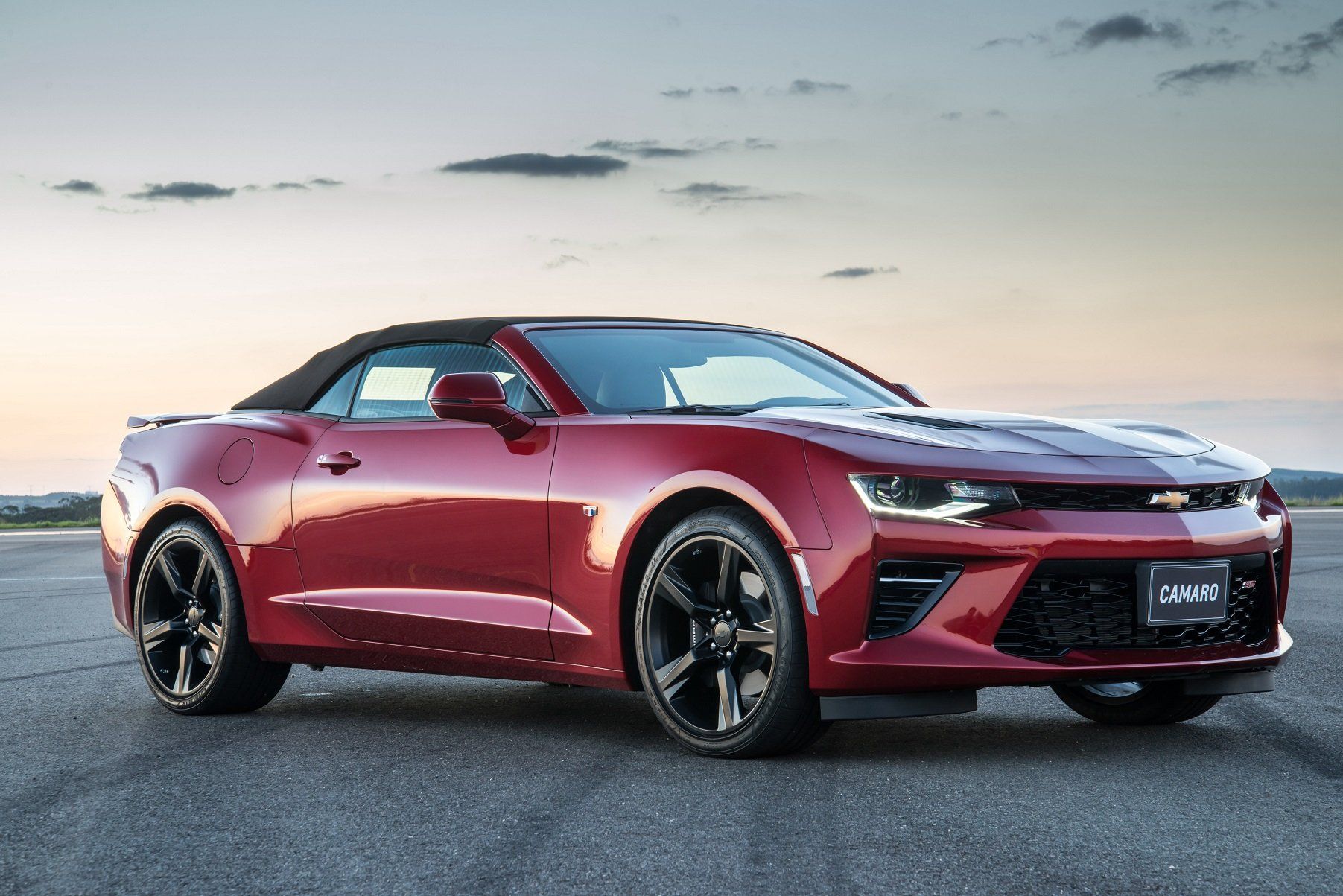
3. **Chevrolet Camaro V6 (Base Model)**The Chevrolet Camaro is an automotive legend, synonymous with American muscle, raw power, and an unmistakable road presence. This iconic status naturally sets a high bar for any vehicle bearing the Camaro nameplate. The base V6 model, while offering a more accessible entry point into the Camaro lineup, still inherited the brand’s reputation for performance and dynamic capability, leading many to anticipate a thrilling drive regardless of the engine configuration.
However, for those seeking the quintessential muscle car experience, the base V6 model often fell short of these deeply ingrained expectations. Despite producing a respectable 275 hp, which on paper might seem sufficient, the V6 Camaro notably struggled with its acceleration. This became particularly apparent when drivers anticipated the kind of forceful thrust associated with the Camaro brand, finding instead a more subdued and less exhilarating pick-up than desired.
Its 0-60 mph acceleration time, clocking in at approximately 6 seconds, while not slow in an absolute sense, was nonetheless considered disappointing when compared directly to key rivals in its class, such as the Ford Mustang EcoBoost, which often delivered quicker sprints. For an iconic car like the Camaro, even its entry-level variant was expected to deliver a more compelling sense of urgency and power, leaving some enthusiasts feeling that this particular iteration didn’t quite live up to the muscle car moniker.
Car Model Information: 1968 Chevrolet Camaro
Name: Chevrolet Camaro
Manufacturer: Chevrolet
Production: 1966–2002,2009–2023
ModelYears: 1967–2002,2010–2024
Class: Pony car
BodyStyle: coupe,convertible
Platform: GM F platform,GM Zeta platform,GM Alpha platform
Layout: Front-engine, rear-wheel-drive layout
Categories: 1970s cars, 1980s cars, 1990s cars, 2+2 coupés, 2000s cars
Summary: The Chevrolet Camaro is a mid-size American automobile manufactured by Chevrolet, classified as a pony car. It first went on sale on September 29, 1966, for the 1967 model year and was designed to compete with the Ford Mustang. The Camaro shared its platform and major components with the Firebird, produced by General Motors’ Pontiac division that was also introduced for the 1967 model year.
Four distinct generations of the Camaro were developed before production ended in 2002. The nameplate was revived on a concept car that evolved into the fifth-generation Camaro; production started on March 16, 2009.
Production of the sixth generation of the Camaro ended in December 2023, for the 2024 model year.
Get more information about: Chevrolet Camaro
Buying a high-performing used car >>>
Brand: Chevrolet Model: Camaro
Price: $79,980 Mileage: 1,713 mi.

4. **Mitsubishi Lancer Evolution IX**The Mitsubishi Lancer Evolution, or Evo, for short, holds a legendary status in the automotive world, primarily due to its formidable rally heritage and aggressive, performance-focused design. The Evo IX, in particular, was revered by enthusiasts as a finely tuned machine built for speed and agility, suggesting a vehicle capable of delivering blistering acceleration and uncompromising dynamics. The expectation for raw, track-ready power was exceptionally high for this iteration.
Despite its powerful reputation and the robust platform, the Evo IX’s acceleration, paradoxically, left much to be desired for a car so widely celebrated as a high-performance vehicle. Equipped with a turbocharged 2.0-liter engine, it certainly packed a punch, yet many dedicated fans and critics alike felt that its straight-line speed didn’t quite match the sheer aggression of its looks or the prowess implied by its rally-bred lineage. The car’s image suggested an untamed beast, but its initial sprint felt somewhat contained.
Its 0-60 mph time, hovering around 5 seconds, while objectively respectable for many cars, was often deemed as merely “respectable” rather than “exceptional” by those who understood the Evo’s true potential and heritage. Given its aggressive styling, track-focused suspension, and turbocharged setup, a significant portion of its fan base anticipated a more explosive and quicker acceleration figure. The Evo IX was undeniably a brilliant handler, but its perceived lack of outright, mind-bending speed for its reputation left a subtle but definite hint of underdelivery for performance purists.
Car Model Information: 2022 Hyundai SANTA FE Limited
Name: Mitsubishi Lancer Evolution
Caption: Mitsubishi Lancer Evolution X
Manufacturer: Mitsubishi Motors
Production: 1992–2016
BodyStyle: sedan (car),station wagon
Assembly: Japan:,{{blist,Okazaki, Aichi,Kurashiki, Okayama
Class: Sport compact car
Layout: Front-engine, four-wheel-drive
Engine: Straight-4,Mitsubishi Sirius engine#4G63,Mitsubishi 4B1 engine#4B11T
Transmission: Twin Clutch SST,5-speed automatic (2002, 2006–2007),manual transmission,6-speed manual (2003–2008)
Predecessor: Mitsubishi Galant VR-4
Related: Mitsubishi Lancer,Mitsubishi Lancer WRC,Mitsubishi Racing Lancer
Categories: 2000s cars, 2010s cars, All-wheel-drive vehicles, All Wikipedia articles in need of updating, All Wikipedia articles that are incomprehensible
Summary: The Mitsubishi Lancer Evolution, popularly referred to as the “Evo”, is a sports sedan and rally car based on the Lancer that was manufactured by Japanese manufacturer Mitsubishi Motors from 1992 until 2016. There have been ten official versions to date, and the designation of each model is most commonly a Roman numeral. All generations use two-litre intercooled turbo inline four-cylinder engines and all-wheel drive systems.
The Lancer was originally intended only for Japanese markets, but demand on the “grey import” market led the Evolution series to be offered through Ralliart dealer networks in the United Kingdom and in various European markets from around 1998. Mitsubishi decided to export the eighth generation Evolution to the United States in 2003 after witnessing the success Subaru had in that market the previous year with the Subaru Impreza WRX.
All domestic-market versions, until the release of the Evolution IX in 2005, were limited by a gentlemen’s agreement between Japanese car manufacturers to advertise no more than 280 PS (206 kW; 276 hp). However, sources say Mitsubishi had already been producing cars with more power but had been underrating the official power outputs in order to comply with the agreement. Therefore, each subsequent version has unofficially evolved above the advertised power figures, with the Japanese-market Evolution IX reaching an alleged output of around 320 PS (235 kW; 316 hp). Various special versions available in other markets, particularly the UK, have official power outputs up to 446 PS (328 kW; 440 hp).
The tenth and final generation of the Lancer Evolution, the Evolution X, was launched in Japan in 2007, and overseas markets in 2008. The Evolution X was produced for almost 10 years until Mitsubishi retired the Lancer Evolution in April 2016.
Get more information about: Mitsubishi Lancer Evolution
Buying a high-performing used car >>>
Brand: Mitsubishi Model: Lancer Evolution IX
Price: $28,719 Mileage: 32,552 mi.
Read more about: The 14 Most Fuel-Efficient Cars of 2025: Expert Insights to Save You Thousands Annually
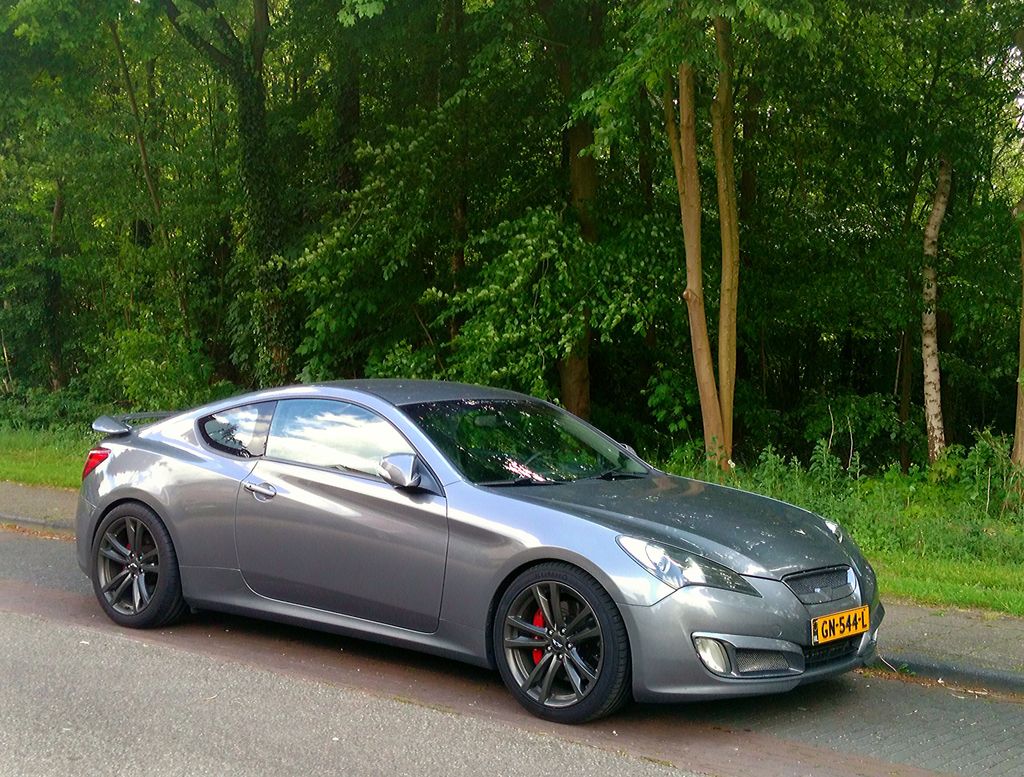
5. **Hyundai Genesis Coupe 2.0T**When the Hyundai Genesis Coupe 2.0T made its debut, it represented a significant step for Hyundai into the performance coupe segment, aiming to challenge more established sports car brands. Its sleek, muscular lines and the promise of a turbocharged engine, along with an attractive price point, generated considerable buzz. The vehicle presented itself as a compelling package for enthusiasts seeking a sporty, rear-wheel-drive experience without the premium cost, thus setting high expectations for its dynamic capabilities.
At the heart of the Genesis Coupe 2.0T was a turbocharged four-cylinder engine boasting 274 hp. While this horsepower figure appeared strong on paper, translating into a competitive advantage, the reality on the road painted a different picture. The car often struggled to keep pace with its more agile and powerful competitors, especially when put to the test in terms of raw acceleration and responsive power delivery. The actual sensation of speed did not quite align with what the engine output suggested.
Enthusiasts, drawn by the car’s performance aspirations, frequently noted that its 0-60 mph time, around 6 seconds, was slower than genuinely expected for a coupe with such a substantial horsepower rating and sporting intent. This underperformance in a crucial metric led to a certain level of disappointment among those who had hoped for a truly quick and engaging ride. The Hyundai Genesis Coupe 2.0T, therefore, became a prime example of a car that looked the part and promised much, but whose real-world speed and acceleration felt a step behind.
Car Model Information: 2022 Hyundai SANTA FE Limited
Name: Hyundai Genesis Coupe
ModelCode: BK
Manufacturer: Hyundai Motor Company
Aka: Hyundai Rohens Coupe (China)
Related: Hyundai Genesis#BH
Production: 2008–2016
ModelYears: unbulleted list
Assembly: Ulsan
Class: Sports car
BodyStyle: coupé
Layout: Front-engine, rear-wheel-drive layout
Platform: Hyundai-Kia M platforms
Engine: unbulleted list
Transmission: unbulleted list
Wheelbase: 2820 mm
Abbr: on (facelift)
Length: 4630 mm
Width: 1865 mm
Height: 1380 mm
Weight: convert
Designer: Eric Stoddard
Categories: 2010s cars, All articles with unsourced statements, Articles with short description, Articles with unsourced statements from July 2017, Cars discontinued in 2016
Summary: The Hyundai Genesis Coupe is a rear-wheel drive sports coupe from Hyundai Motor Company, first released on October 13, 2008, for the Korean market. It is Hyundai’s first rear-wheel drive sports coupe, and shares its basic platform with the Hyundai Genesis luxury sedan.
The Genesis Coupe arrived in United States dealerships on February 26, 2009, as a 2010 model. Hyundai USA acting president and CEO John Krafcik described the Genesis Coupe as being designed “…to deliver a driving experience that challenges cars like the Infiniti G37.”
With the launch of Genesis Motors as a standalone luxury brand, the Hyundai Genesis Coupe remained branded as a Hyundai and eventually was discontinued in 2016.
Get more information about: Hyundai Genesis Coupe
Buying a high-performing used car >>>
Brand: Hyundai Model: Genesis Coupe
Price: $28,719 Mileage: 32,552 mi.
Read more about: Unlocking Luxury: 13 Premium Cars You Can Lease for Under $500 a Month
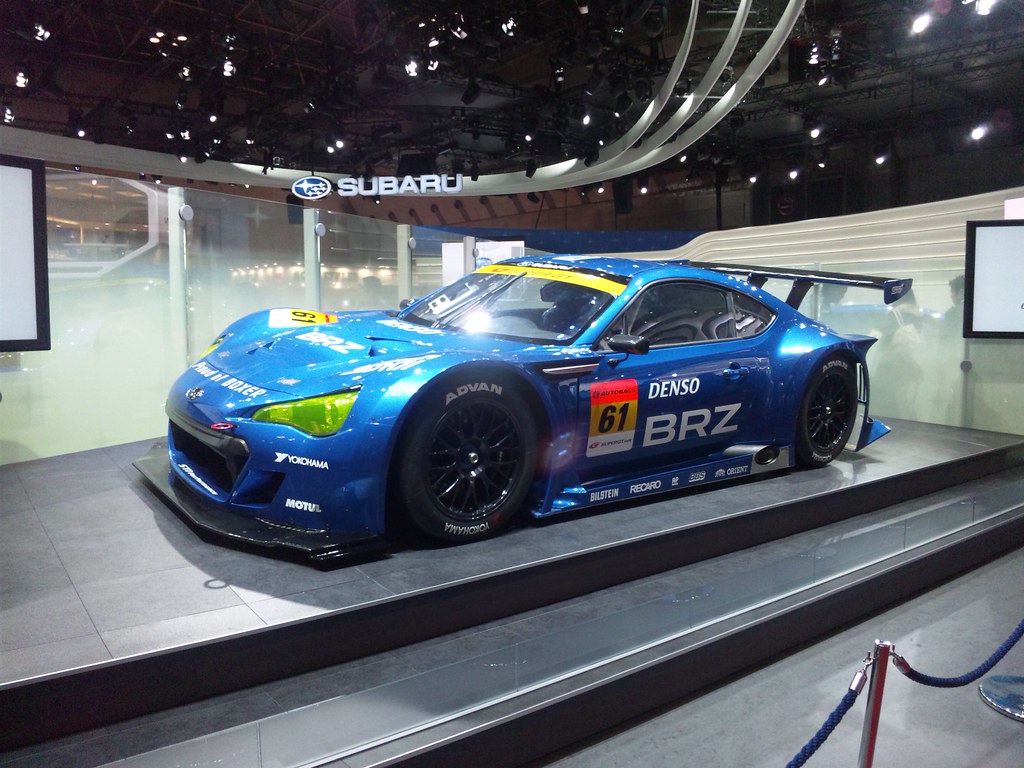
6. **Subaru BRZ**The Subaru BRZ, along with its twin the Toyota 86, was lauded upon its release for its purist approach to driving dynamics. Engineered with a low center of gravity, a lightweight design, and an emphasis on balance and handling, it quickly garnered a reputation as an affordable driver’s car. The marketing focused heavily on its nimble agility and the joy of cornering, implicitly suggesting a holistic performance package, even if not directly boasting about raw power.
However, the BRZ’s commitment to handling came with a significant trade-off in the department of straight-line speed. Its 2.0-liter boxer engine, while contributing to the low center of gravity, produced a rather modest 205 hp. This power output, while adequate for engaging corners, often left drivers craving more urgency when accelerating or merging onto highways, creating a distinct feeling that the car had untapped potential that wasn’t quite realized under the hood.
The car’s 0-60 mph time of approximately 6.6 seconds, while not abysmal, was certainly not impressive for a vehicle that positioned itself so strongly as a performance coupe. Many drivers found that while the BRZ excelled in carving corners and delivering an exceptional tactile driving experience, its outright speed was a noticeable shortcoming. This left a segment of the driving enthusiast community wanting more sheer power and acceleration, feeling that the BRZ focused so intently on handling that it somewhat neglected the excitement of raw speed.
Car Model Information: 2017 Subaru BRZ Series.Yellow
Name: Toyota 86 / Subaru BRZ
Caption: 2022 Toyota GR86 Premium (ZN8)
Manufacturer: Toyota
Aka: unbulleted list
Production: January 2012 – present
ModelYears: 2013–present
Assembly: Ōta, Gunma
Class: Sports car
BodyStyle: fastback,coupé
Layout: Front-engine, rear-wheel-drive
Sp: uk
Categories: 2+2 coupés, 2020s cars, All articles with dead external links, All articles with unsourced statements, Articles with dead external links from June 2013
Summary: The Toyota 86 and the Subaru BRZ are 2+2 sports cars jointly developed by Toyota and Subaru, manufactured at Subaru’s Gunma assembly plant.
The 2+2 fastback coupé has a naturally aspirated boxer engine, front-engined, rear-wheel-drive configuration, 53/47 front/rear weight balance and low centre of gravity; it was inspired by Toyota’s earlier AE86, a small, light, front-engine/rear-drive Corolla variant widely popular for Showroom Stock, Group A, Group N, Rally, Club and drift racing.
For the first-generation model, Toyota marketed the sports car as the 86 in Asia, Australia, North America (from August 2016), South Africa, and South America; as the Toyota GT86 in Europe; as the 86 and GT86 in New Zealand; as the Toyota FT86 in Brunei, Nicaragua and Jamaica and as the Scion FR-S (2012–2016) in the United States and Canada.
The second-generation model is marketed by Toyota as the GR86 as part of the Gazoo Racing family.
Get more information about: Toyota 86
Buying a high-performing used car >>>
Brand: Subaru Model: BRZ
Price: $22,747 Mileage: 54,658 mi.
Read more about: Unleash the Roar: 14 High-Performance Muscle and Sports Cars Under $20,000 for 2025

7. **Toyota 86**As the mechanical sibling to the Subaru BRZ, the Toyota 86 shared the same fundamental design philosophy: prioritize driver engagement and exceptional handling over brute force. It was marketed as a return to lightweight, rear-wheel-drive sports car simplicity, appealing to enthusiasts who valued finesse and balance. The sporty aesthetic, with its low-slung profile and aggressive front fascia, hinted at a car that would offer an exciting, quick driving experience, reinforcing the idea of a spirited performance vehicle.
Yet, mirroring the BRZ’s experience, the Toyota 86 also suffered conspicuously from a perceived lack of power. Its 205 hp engine, identical to its Subaru counterpart, was purposefully paired with a lightweight chassis designed for nimble handling. While this combination undoubtedly created an incredibly responsive and enjoyable car through twists and turns, it couldn’t fully compensate for a noticeable deficit in outright acceleration, particularly when the road straightened out.
The sluggishness of the Toyota 86 became most apparent in its 0-60 mph sprint, which often took over 7 seconds. For a car that so overtly marketed itself as sporty and driver-focused, this performance figure was unequivocally underwhelming in terms of raw speed. Enthusiasts looking for a thrill beyond the corners often felt that the 86’s engine simply wasn’t potent enough to match its dynamic capabilities or its aggressive styling, ultimately leaving a gap between its promise as a sports car and its actual straight-line performance.
Continuing our journey through vehicles that promised much but delivered less in terms of raw speed and power, we now examine the next seven contenders. These models, like their predecessors, often boasted impressive aesthetics or esteemed badges, yet their real-world performance left many drivers feeling a distinct gap between expectation and reality. For consumers, understanding these discrepancies is crucial when making informed purchasing decisions in a market saturated with high-performance claims.
Car Model Information: 2019 Toyota 86 GT
Name: Toyota 86 / Subaru BRZ
Caption: 2022 Toyota GR86 Premium (ZN8)
Manufacturer: Toyota
Aka: unbulleted list
Production: January 2012 – present
ModelYears: 2013–present
Assembly: Ōta, Gunma
Class: Sports car
BodyStyle: fastback,coupé
Layout: Front-engine, rear-wheel-drive
Sp: uk
Categories: 2+2 coupés, 2020s cars, All articles with dead external links, All articles with unsourced statements, Articles with dead external links from June 2013
Summary: The Toyota 86 and the Subaru BRZ are 2+2 sports cars jointly developed by Toyota and Subaru, manufactured at Subaru’s Gunma assembly plant.
The 2+2 fastback coupé has a naturally aspirated boxer engine, front-engined, rear-wheel-drive configuration, 53/47 front/rear weight balance and low centre of gravity; it was inspired by Toyota’s earlier AE86, a small, light, front-engine/rear-drive Corolla variant widely popular for Showroom Stock, Group A, Group N, Rally, Club and drift racing.
For the first-generation model, Toyota marketed the sports car as the 86 in Asia, Australia, North America (from August 2016), South Africa, and South America; as the Toyota GT86 in Europe; as the 86 and GT86 in New Zealand; as the Toyota FT86 in Brunei, Nicaragua and Jamaica and as the Scion FR-S (2012–2016) in the United States and Canada.
The second-generation model is marketed by Toyota as the GR86 as part of the Gazoo Racing family.
Get more information about: Toyota 86
Buying a high-performing used car >>>
Brand: Toyota Model: 86
Price: $24,995 Mileage: 49,831 mi.
Read more about: Unveiling the Vault: America’s Most Extraordinary and Insane Car Collections Brought to Light
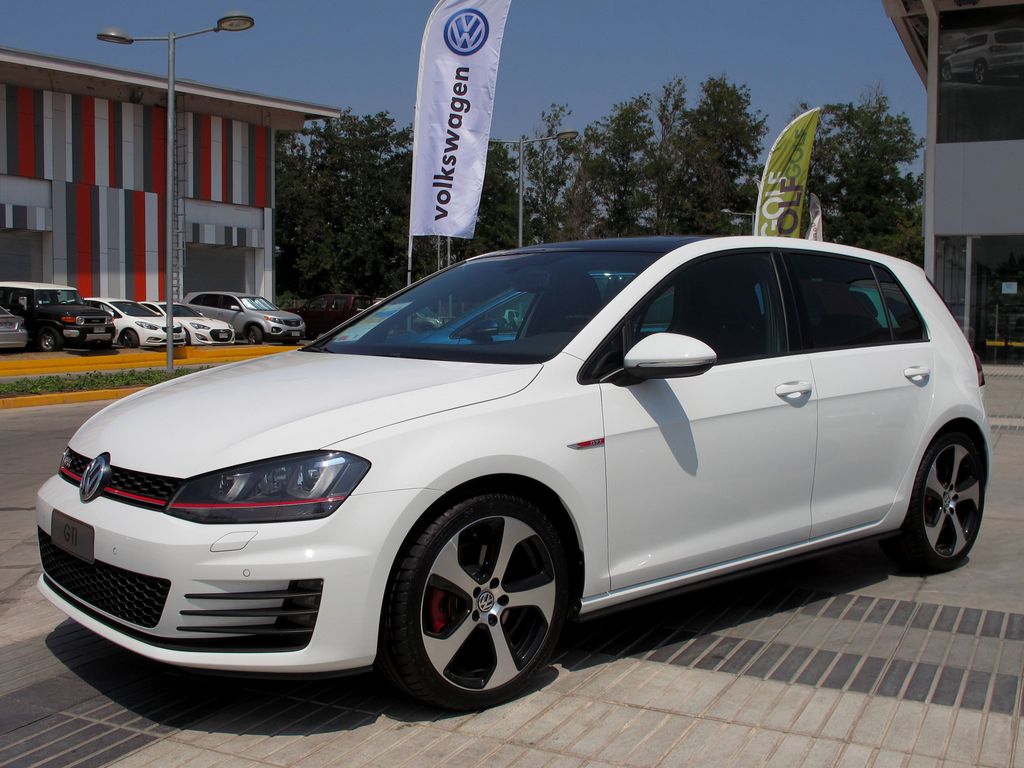
8. **Volkswagen GTI (Base Trim)**The Volkswagen GTI has long been a benchmark for the “hot hatch” segment, celebrated for its blend of practical usability, refined ride quality, and engaging driving dynamics. This reputation naturally sets a high bar, with consumers expecting a peppy and spirited performance car that can handle both daily commutes and enthusiastic weekend drives. The base trim, while offering a more accessible entry point, still carries the weight of the GTI badge, implying a level of performance that should stand out.
However, despite its excellent handling and comfortable cabin, the base model of the Volkswagen GTI often falls short in terms of raw, outright speed. Equipped with an engine producing 220 horsepower, its acceleration figures, while decent for a compact car, are not particularly thrilling when compared to other contenders in the fiercely competitive hot hatch category. The 0-60 mph sprint, which typically clocks in around 6.2 seconds, positions it as merely competent rather than exceptional.
For performance enthusiasts, this lack of distinctive speed can be a notable disappointment. While the GTI excels in carving corners and delivering a sophisticated driving experience, its straight-line performance doesn’t quite match the expectations set by its “hot hatch” moniker. In a segment where rivals are constantly pushing the boundaries of quickness and power, the base GTI’s speed performance feels somewhat understated, leaving drivers who prioritize outright acceleration wanting more.
Car Model Information: 2013 Volkswagen GTI 2-Door
Categories: All set index articles, Articles with short description, Commons category link from Wikidata, Hot hatches, Set index articles on cars
Summary: The Volkswagen GTI models may refer to:
Volkswagen Gol GTI, a performance-oriented B-segment/supermini/subcompact hatchback produced between 1989 and 2000
Volkswagen Golf/Rabbit GTI, a performance-oriented C-segment/small family car/compact hatchback produced since 1976
Volkswagen Lupo GTI, a performance-oriented A-segment/city car produced between 2000 and 2005
Volkswagen Polo GTI, a performance-oriented B-segment/supermini/subcompact hatchback produced since 1995
Volkswagen Scirocco GTI, a performance-oriented 2+2 coupé produced between 1976 and 1981
Volkswagen Up GTI, a performance-oriented A-segment/city car produced between 2017 and 2023
Volkswagen GTI Roadster Vision Gran Turismo, a concept car developed in 2014
Get more information about: Volkswagen GTI
Buying a high-performing used car >>>
Brand: Volkswagen Model: GTI
Price: $9,950 Mileage: 116,360 mi.
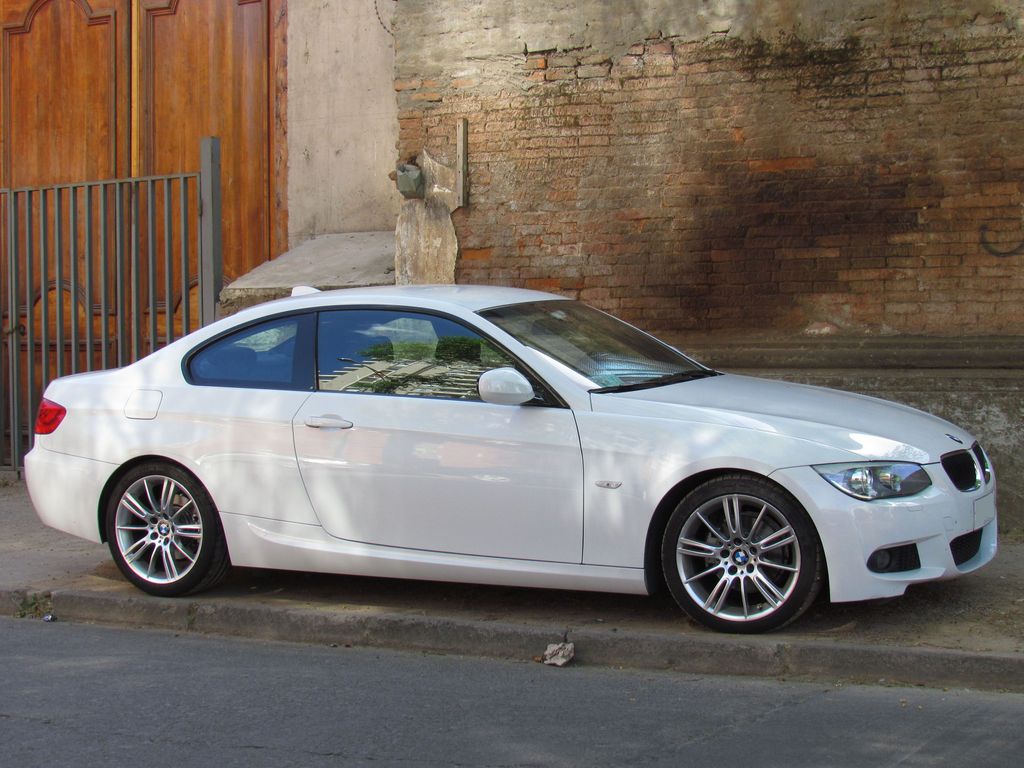
9. **BMW 320i**BMW’s 3 Series is arguably the most iconic sports sedan in automotive history, renowned for its “Ultimate Driving Machine” philosophy. The 320i, positioned as an entry-level variant, carries the significant weight of this brand prestige, leading prospective buyers to anticipate a sophisticated blend of luxury, precise handling, and, crucially, engaging performance. The allure of the BMW badge alone often primes consumers for a driving experience that is both dynamic and exhilarating, even in its most affordable iteration.
Regrettably, the BMW 320i frequently struggles to live up to these heightened performance expectations, particularly concerning raw power and acceleration. With an engine producing a modest 180 horsepower, the vehicle, while undoubtedly offering the composed handling and premium feel characteristic of BMW, lacks the vigorous punch that many drivers associate with the brand. This power deficit translates into a noticeably more subdued acceleration profile than one might anticipate from a car bearing the esteemed BMW roundel.
When put to the test, the 320i’s 0-60 mph time, often around 7.1 seconds, is considered sluggish for a sports sedan in its class. While it navigates corners with impressive composure and delivers a refined ride, the absence of brisk acceleration can be a significant letdown for enthusiasts seeking that distinctive BMW thrill. It remains a well-built, capable luxury sedan, but its straight-line speed decidedly falls short of the dynamic prowess implied by its heritage, leaving performance-oriented drivers feeling underwhelmed.
Car Model Information: 2016 BMW 320 i xDrive
Name: BMW 3 Series
Manufacturer: BMW
Production: 1975–present
Class: Compact executive car
Predecessor: BMW 02 Series
Categories: 1970s cars, 1980s cars, 1990s cars, 2000s cars, 2010s cars
Summary: The BMW 3 series is a line of compact executive cars manufactured by the German automaker BMW since May 1975. It is the successor to the 02 series and has been produced in seven generations.
The first generation of the 3 Series was only available as a 2-door saloon; the model range expanded to include a 4-door saloon, 2-door convertible, 2-door coupé, 5-door estate, 5-door liftback (“Gran Turismo”; discontinued in 2019) and 3-door hatchback body styles. Since 2013, the coupé and convertible models have been marketed as the 4 Series; these styles no longer being included in the 3 Series.
The 3 Series is BMW’s best-selling model line, accounting for around 30% of the BMW brand’s annual total car sales, and has won numerous awards throughout its history. The M version of the 3 series, M3, debuted with the E30 M3 in 1986.
Get more information about: BMW 3 Series
Buying a high-performing used car >>>
Brand: BMW Model: 320i
Price: Not Priced Mileage: 0 mi.
Read more about: The 10 Exciting Classic Sports Cars You Can Own Without Breaking the Bank
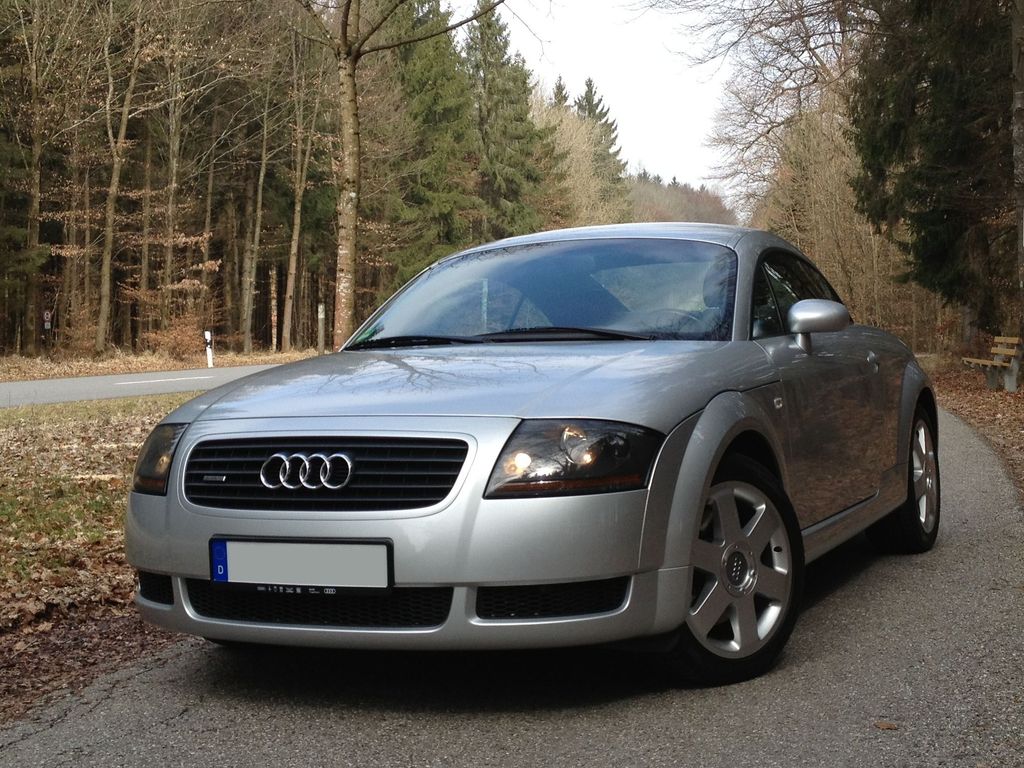
10. **Audi TT 1.8T**The Audi TT has always captured attention with its distinctive, sleek, and overtly sporty design, making a clear visual statement that it belongs in the realm of performance-oriented vehicles. Its low-slung profile, clean lines, and premium interior create an immediate impression of a fast and agile machine. This striking aesthetic, combined with Audi’s reputation for sophisticated engineering, naturally leads consumers to expect a driving experience that is as exhilarating as the car looks.
However, for those opting for the base 1.8T model, the actual performance often tells a different story than its appearance suggests. Powered by an engine generating 180 horsepower, the Audi TT 1.8T, while certainly capable of comfortable cruising and stylish commutes, does not deliver the kind of brisk acceleration one would expect from a car so visually imbued with sportiness. The gap between its aggressive styling and its real-world speed becomes apparent almost immediately.
Its 0-60 mph time, typically around 7 seconds, is unequivocally underwhelming for a vehicle that looks as quick as the TT. This performance figure positions it more in line with a luxury cruiser than a true, uncompromised sports car designed for spirited drives and quick sprints. While the car undeniably offers a premium cabin and a smooth ride, the absence of compelling outright speed means that the Audi TT 1.8T, in its base form, ultimately delivers more aesthetic appeal than genuine performance excitement, leaving a notable void for drivers seeking a truly fast experience.
Car Model Information: 2001 Audi TT Roadster quattro
Name: Audi TT
Caption: 2019 Audi TT Sport 40 TFSi
Manufacturer: Audi AG
Production: October 1998 – November 2023
ModelYears: 1999–2023
Assembly: Győr
Class: Sports car
BodyStyle: coupé
Layout: unbulleted list
Platform: Volkswagen Group A platform,Volkswagen Group MQB platform
Sp: uk
Categories: 2+2 coupés, 2000s cars, 2010s cars, 2020s cars, All-wheel-drive vehicles
Summary: The Audi TT is a production front-engine, 2-door, 2+2 sports coupé and roadster, manufactured and marketed by Audi from 1998 to 2023 across three generations.
For each of its three generations, the TT has been based on consecutive generations of Volkswagen’s “Group A” platforms, starting with its “PQ34” fourth generation. The TT shares powertrain and suspension layouts with its platform mates, including the Audi A3, like a transversely mounted front-engine, powering front-wheel drive or four-wheel drive, and fully independent suspension using MacPherson struts in front.
The TT’s first two generations were assembled by Audi’s Hungarian subsidiary, one of the world’s largest engine manufacturing plants, using bodyshells manufactured and painted at Audi’s Ingolstadt plant and parts made entirely by the Hungarian factory for the third generation.
The last of the 662,762 Audi TTs was manufactured in November 2023.
Get more information about: Audi TT
Buying a high-performing used car >>>
Brand: Audi Model: TT
Price: $9,495 Mileage: 83,695 mi.
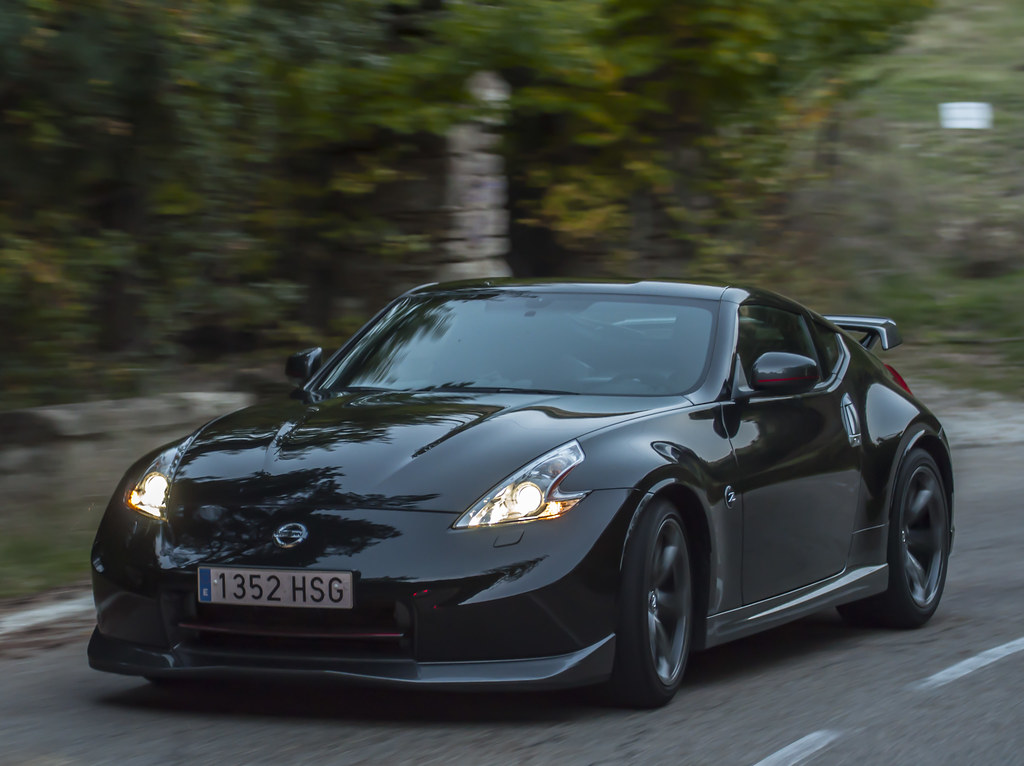
11. **Nissan 370Z**The Nissan 370Z carries the torch of a long and storied line of “Z” sports cars, a lineage synonymous with accessible performance and engaging rear-wheel-drive dynamics. With its muscular proportions, aggressive stance, and the promise of a robust V6 engine, the 370Z is clearly marketed as a driver’s car, designed to deliver a raw and visceral experience. Enthusiasts approaching this vehicle naturally anticipate strong acceleration and a significant power output that lives up to its heritage.
Under the hood, the Nissan 370Z boasts a substantial 332 horsepower V6 engine, a figure that on paper suggests formidable straight-line speed. This power plant is certainly capable, providing a satisfying exhaust note and a generally spirited drive. However, when placed in the broader context of the performance car world, the 370Z’s acceleration, while decent, often falls short of the heightened expectations generated by its aggressive styling and its legacy as a formidable sports coupe.
The 370Z’s 0-60 mph sprint, which typically settles around 5.1 seconds, is indeed respectable in isolation. Yet, within its class, this figure is often perceived as merely “decent” rather than “exceptional.” For many performance-minded drivers, this translates into a feeling that the car could, and perhaps should, offer more immediate punch and quicker response given its substantial horsepower and clear performance aspirations. The Nissan 370Z, therefore, represents a car that is good but not quite great in terms of outright acceleration, leaving some enthusiasts wishing for that extra edge of performance.
Car Model Information: 2014 Nissan 370Z Touring
Name: Nissan 370Z (Z34)
Caption: 2012–2017 Nissan Fairlady Z
Manufacturer: Nissan
Aka: Nissan Fairlady Z (Japan)
Production: December 2008 – 2021
Assembly: Kaminokawa, Tochigi
Designer: Randy Rodriguez; Diane Allen (2005)
Class: Sports car
BodyStyle: fastback,coupé
Layout: Front mid-engine, rear-wheel drive layout
Platform: Nissan FM platform
Related: Infiniti G-series (Q40/Q60)#Fourth generation (V36, 2007–2015),Infiniti G-series (Q40/Q60)#Fourth generation (V36, 2007–2015),Infiniti Q60#First generation (CV36, 2013–2015),Nissan Skyline#Twelfth generation (V36; 2006),Infiniti EX,Nissan Z (RZ34)
Engine: Nissan VQ engine#VQ37VHR,V6 engine
Transmission: Jatco,manual transmission
Wheelbase: 2550 mm
Abbr: on
Length: 4240 mm
Width: 1850 mm
Height: 1320 mm
Weight: convert
Predecessor: Nissan 350Z
Successor: Nissan Z (RZ34)
Sp: us
ModelYears: 2009–2020
Categories: 2010s cars, All articles that are excessively detailed, All articles with dead external links, All articles with style issues, All articles with unsourced statements
Summary: The Nissan 370Z (known as the Fairlady Z Z34 in Japan) is a 2-door, 2-seater sports car (S-segment in Europe) manufactured by Nissan Motor Company. It was announced on October 29, 2006, and was first shown at an event in Los Angeles ahead of the 2008 Greater LA Auto Show, before being officially unveiled at the show itself. The 370Z is the sixth generation of the Nissan Z-car line, succeeding the 350Z. The 2020 model year was the final model year for the 370Z. The line was continued by the Nissan Z (RZ34) on a modified version of the same platform.
Get more information about: Nissan 370Z
Buying a high-performing used car >>>
Brand: Nissan Model: 370Z
Price: $15,998 Mileage: 100,474 mi.
Read more about: Unleash the Roar: 14 High-Performance Muscle and Sports Cars Under $20,000 for 2025
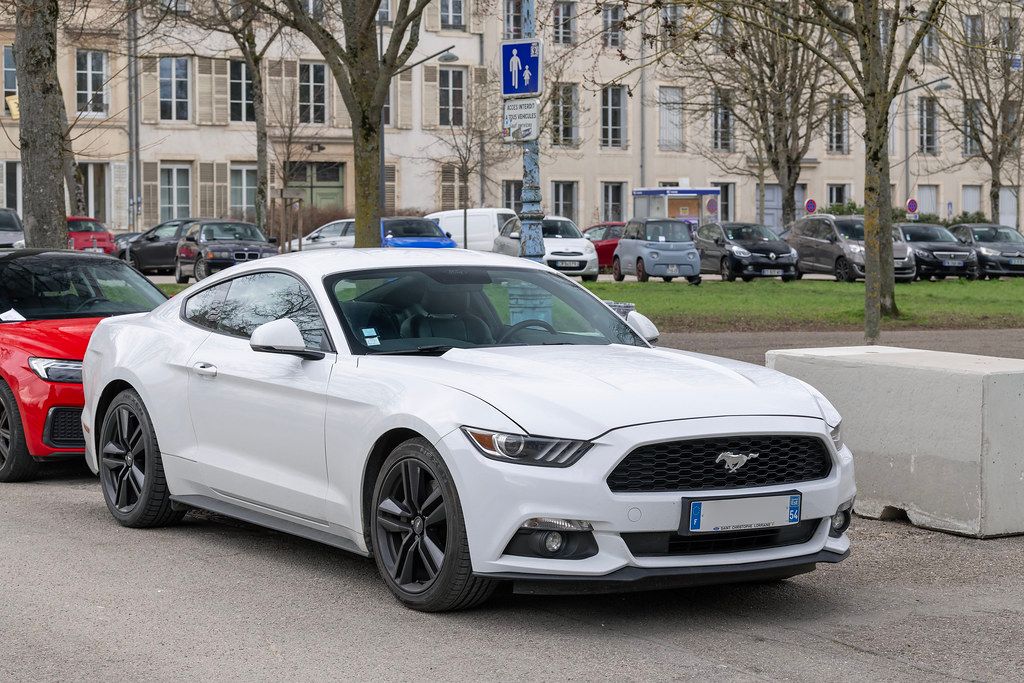
12. **Ford Mustang EcoBoost**The Ford Mustang is an American icon, a name deeply ingrained in the fabric of performance car culture, traditionally associated with powerful V8 engines and exhilarating speed. The introduction of the EcoBoost model, with its turbocharged 2.3-liter four-cylinder engine, was a strategic move to offer a more fuel-efficient and technologically advanced entry point into the Mustang lineup, while still promising a distinctly high-performance experience that aligns with the brand’s dynamic image.
On paper, the EcoBoost engine delivers a robust 310 horsepower, a figure that suggests a truly quick and capable sports coupe. The marketing often highlights this impressive output, leading consumers to anticipate a spirited and thrilling ride. However, in real-world driving conditions, the performance of the Ford Mustang EcoBoost frequently proves to be somewhat underwhelming, particularly when it comes to delivering the visceral acceleration that many expect from a car wearing the iconic Mustang badge.
Its 0-60 mph time, usually recorded around 5.5 seconds, while not slow, is often considered slower than expected for a vehicle in this class, especially one that carries the Mustang’s legacy and promises. This discrepancy between anticipated and actual acceleration can lead to a less thrilling experience than drivers might initially envision, making the EcoBoost Mustang feel less potent than its aggressive looks and horsepower figures suggest. For those seeking the raw, unadulterated excitement traditionally associated with a Mustang, this particular iteration often leaves a feeling of wanting more.
Car Model Information: 2017 Ford Mustang GT Premium
Name: Ford Mustang
Caption: 2018 Ford Mustang GT 5.0
Aka: Ford T5 (Germany)
Manufacturer: Ford Motor Company
Production: March 1964 – present
ModelYears: 1965–present
Class: Unbulleted list
BodyStyle: Unbulleted list
Layout: Front-engine, rear-wheel-drive layout
Categories: 1970s cars, 1980s cars, 1990s cars, 2+2 coupés, 2000s cars
Summary: The Ford Mustang is a series of American automobiles manufactured by Ford. In continuous production since 1964, the Mustang is currently the longest-produced Ford car nameplate. Currently in its seventh generation, it is the fifth-best selling Ford car nameplate. The namesake of the “pony car” automobile segment, the Mustang was developed as a highly styled line of sporty coupes and convertibles derived from existing model lines, initially distinguished by “long hood, short deck” proportions.
Originally predicted to sell 100,000 vehicles yearly, the 1965 Mustang became the most successful vehicle launch since the 1927 Model A. Introduced on April 17, 1964 (16 days after the Plymouth Barracuda), over 400,000 units were sold in its first year; the one-millionth Mustang was sold within two years of its launch. In August 2018, Ford produced the 10-millionth Mustang; matching the first 1965 Mustang, the vehicle was a 2019 Wimbledon White convertible with a V8 engine.
The success of the Mustang launch led to multiple competitors from other American manufacturers, including the Chevrolet Camaro and Pontiac Firebird (1967), AMC Javelin (1968), and Dodge Challenger (1970). It also competed with the Plymouth Barracuda, which was launched around the same time. The Mustang also had an effect on designs of coupes worldwide, leading to the marketing of the Toyota Celica and Ford Capri in the United States (the latter, by Lincoln-Mercury). The Mercury Cougar was launched in 1967 as a unique-bodied higher-trim alternative to the Mustang; during the 1970s, it included more features and was marketed as a personal luxury car.
From 1965 until 2004, the Mustang shared chassis commonality with other Ford model lines, staying rear-wheel-drive throughout its production. From 1965 to 1973, the Mustang was derived from the 1960 Ford Falcon compact. From 1974 until 1978, the Mustang (denoted Mustang II) was a longer-wheelbase version of the Ford Pinto. From 1979 until 2004, the Mustang shared its Fox platform chassis with 14 other Ford vehicles (becoming the final one to use the Fox architecture). Since 2005, Ford has produced two generations of the Mustang, each using a distinct platform unique to the model line.
Through its production, multiple nameplates have been associated with the Ford Mustang series, including GT, Mach 1, Boss 302/429, Cobra (separate from Shelby Cobra), and Bullitt, along with “5.0” fender badging (denoting 4.9 L OHV or 5.0 L DOHC V8 engines).
Get more information about: Ford Mustang
Buying a high-performing used car >>>
Brand: Ford Model: Mustang
Price: $30,000 Mileage: 50,437 mi.
Read more about: Beyond Expectations: 10 ’90s American Muscle Cars Whose Values Are Soaring, Redefining Collectible Performance
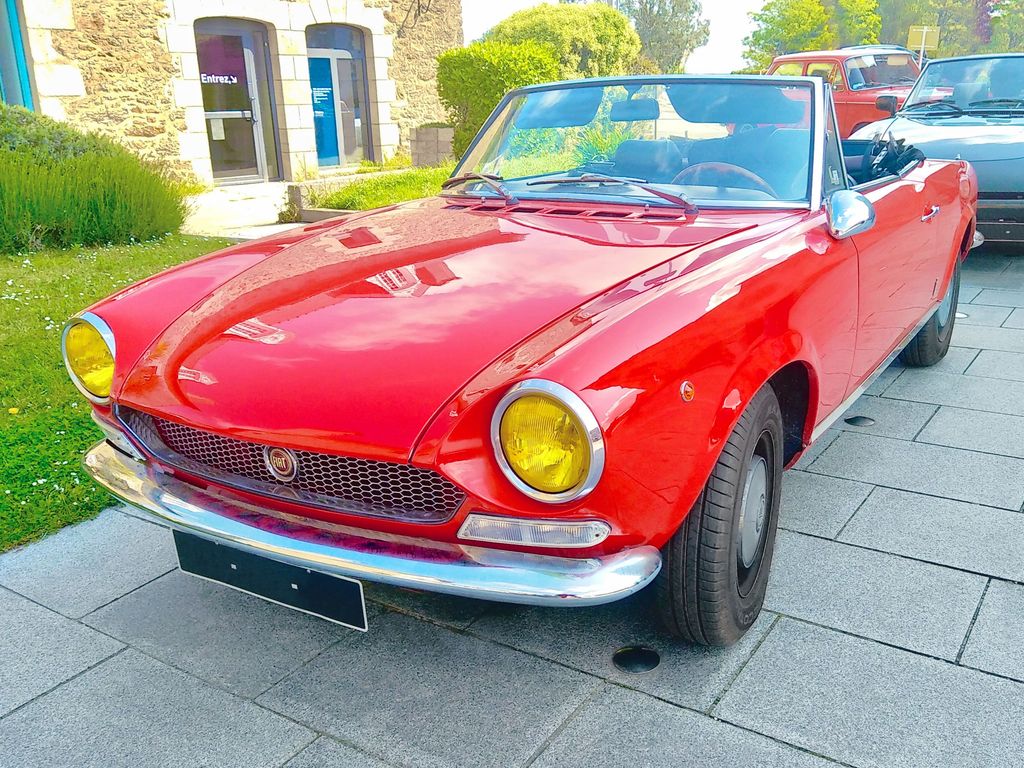
13. **Fiat 124 Spider**The Fiat 124 Spider made a charming return to the roadster segment, sharing its underpinnings with the acclaimed Mazda MX-5 Miata, a car celebrated for its lightweight, nimble handling, and pure driving joy. The 124 Spider, with its distinctly Italian styling, aimed to infuse this proven platform with a unique character, promising a sporty, open-air driving experience that was both engaging and charismatic. Its attractive design and historical nameplate built high expectations for a lively performance.
However, despite its sporty aesthetics and respectable handling capabilities derived from its Mazda counterpart, the Fiat 124 Spider often falls short in the crucial area of raw power and straight-line acceleration. It is equipped with a 1.4-liter turbocharged engine that produces 160 horsepower. While this engine provides adequate thrust for casual cruising, it frequently leaves performance-minded drivers wishing for more urgency and a more exhilarating burst of speed, especially when put against its direct competitors.
The car’s 0-60 mph time, which typically hovers over 6 seconds, is notably less impressive when compared to other vehicles in its segment, including its own platform mate, the Mazda MX-5 Miata, which often feels more immediate and responsive. For a roadster that looks as spirited as the 124 Spider, this performance deficit can be a significant point of disappointment. It’s a stylish and enjoyable car for leisurely drives, but for those seeking a genuinely quick and potent open-top experience, the Fiat 124 Spider simply doesn’t have the horsepower to fully back up its sporty appearance.
Car Model Information: 2022 Hyundai SANTA FE Limited
Name: Fiat 124 Sport Spider
Caption: Fiat 124 Sport Spider (CS)
Aka: Fiat Spider 2000 , Pininfarina Spider (1982–1985)
Manufacturer: Fiat Automobiles
Production: 1966–1985
Assembly: Turin
Designer: Pininfarina,Tom Tjaarda,Franco Martinengo (design director),Battista Pininfarina
Class: Sports car
BodyStyle: Cabriolet (automobile)
Layout: Front-engine, rear-wheel-drive layout
Related: Fiat 124
Engine: {{convert,1438,cc,L,1,abbr=on,Inline-four engine
Abbr: on
Transmission: Manual transmission,5-speed manual,Automatic transmission
Wheelbase: 89.75 in
Length: 156.25 in
Width: 63.5 in
Height: 49.25 in
Predecessor: Fiat Pininfarina Cabriolet
Successor: Fiat Barchetta,Fiat 124 Spider (2016)
Sp: uk
Categories: 1960s cars, 1970s cars, 1980s cars, All articles with dead external links, Articles with dead external links from August 2025
Summary: The Fiat 124 Sport Spider is a convertible sports car marketed by Fiat for model years 1966–1982 and by Pininfarina for 1982–1985 model years. Designed by and manufactured at the Italian carrozzeria Pininfarina factory, the monocoque, front-engined, rear-drive Sport Spider debuted at the November 1966 Turin Auto Show with styling by Tom Tjaarda.
Fiat later marketed the car as the Spider 2000 (1979–1982). After being retired by Fiat, Pininfarina continued the production of the model under its own brand as Pininfarina Spider Azzurra for the North American market and Pininfarina Spidereuropa for the European market for three more years, from August 1982 until 1985.
In 2015, a successor of the Fiat 124 Spider was presented at the Los Angeles Auto Show.
Get more information about: Fiat 124 Sport Spider
Buying a high-performing used car >>>
Brand: Fiat Model: 124 Spider
Price: $28,719 Mileage: 32,552 mi.
Read more about: Unearthing the Automotive Unicorns: 9 Muscle Cars So Rare Even Dedicated Collectors Scramble to Find Them
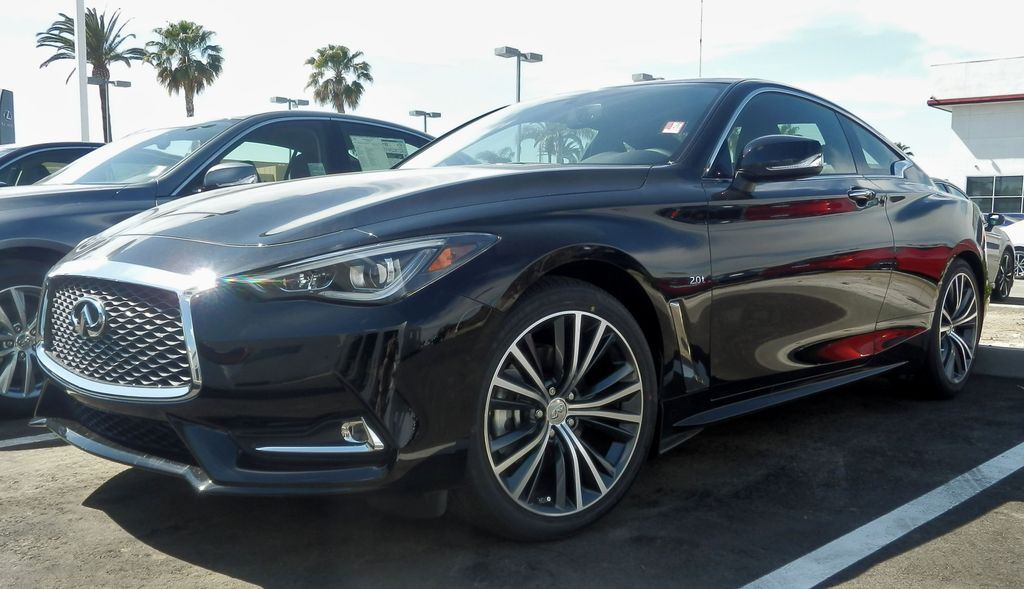
14. **Infiniti Q60 2.0T**The Infiniti Q60 coupe is undeniably a looker, exuding a sense of premium style and luxury with its sleek lines and aggressive posture. Positioned within the competitive luxury sports coupe segment, it promises a refined driving experience combined with a healthy dose of performance that should put it on par with its European rivals. The brand’s aspirations for this model were clear: to offer a compelling alternative that blends elegance with dynamic capability, setting a high expectation for overall driving satisfaction.
Yet, for the entry-level 2.0T variant, the engine’s performance often struggles to match the car’s undeniably striking aesthetics. Powered by a 208 horsepower engine, the Infiniti Q60 2.0T delivers a driving experience that, while smooth and comfortable, often feels distinctly underwhelming for a car marketed as a performance coupe. The power delivery lacks the urgency and punch that enthusiasts expect from a vehicle in this category, leading to a noticeable disconnect between its sporty appearance and its actual acceleration.
Its 0-60 mph acceleration time, typically around 7 seconds, highlights this performance deficit. In a segment populated by fiercely quick and responsive competitors like the BMW 4 Series, the Q60 2.0T simply lags behind, failing to deliver the kind of exhilarating speed that defines its class. While the Q60 offers a luxurious interior and comfortable ride, performance-minded drivers are frequently left disappointed by its engine’s inability to keep pace, making it a case where style and luxury are present, but the expected performance thrill is conspicuously absent.
Car Model Information: 2018 INFINITI Q60 2.0t LUXE
Categories: All-wheel-drive vehicles, All Wikipedia articles written in American English, All articles with dead external links, Articles with dead external links from September 2024, Articles with permanently dead external links
Summary: The Infiniti Q60 is a 2-door luxury coupe manufactured by Japanese automaker Nissan. It is the successor to the Infiniti G coupe and convertible. The Q60 nameplate was first used as a rebadging of Infiniti G Line. A new version was introduced in early 2016, as a 2017 model.
Get more information about: Infiniti Q60
Buying a high-performing used car >>>
Brand: Infiniti Model: Q60
Price: $18,995 Mileage: 113,049 mi.
Read more about: Some Used Vehicles That Defy Expectations and Deliver Lasting Value
In an automotive landscape where every new model strives to capture attention with bold claims and striking designs, it’s imperative for consumers to look beyond the marketing hype. Our extensive analysis of these 14 vehicles clearly demonstrates that an aggressive stance or a prestigious badge doesn’t always guarantee the thrilling performance you anticipate. When searching for your next car, especially one promising speed and power, always prioritize empirical data, real-world test results, and unbiased reviews. Doing so ensures that you invest in a vehicle that truly delivers on its fundamental promise, rather than one that merely boasts more ego than horsepower.



